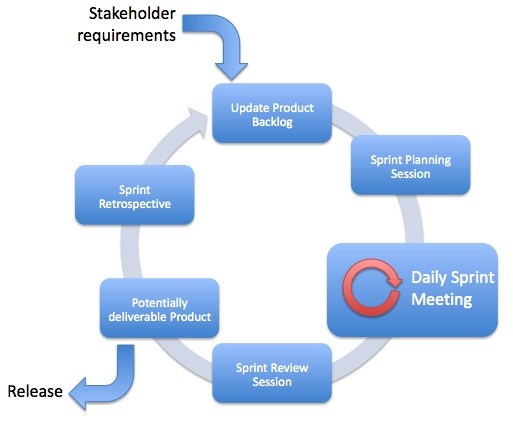In the fast-paced world of software development and project management, finding the right methodology to ensure productivity, transparency, and adaptability is crucial. One such methodology that has gained immense popularity over the years is Scrum. In this blog post, we will delve into the practical application of Scrum through real-world examples and case studies to demonstrate how this agile framework can transform your project management practices.
What is Scrum?
Before we dive into the real-world examples, let’s recap the core principles of Scrum. At its essence, Scrum is an agile framework that promotes collaboration, transparency, and adaptability within a cross-functional team. It divides work into short, time-boxed iterations known as sprints, typically lasting two to four weeks, during which a set of tasks or user stories are completed. Scrum relies heavily on frequent communication and feedback, making it a dynamic and responsive approach to project management.
Now, let’s see how Scrum works in practice with some inspiring real-world examples.
Real-World Example 1: Spotify
Spotify, the world’s leading music streaming service, is known for its agile approach to software development. They attribute a large part of their success to adopting Scrum as their primary project management framework.
In Spotify’s case, Scrum is not just a buzzword; it’s the cornerstone of their development process. Squads, which are autonomous, cross-functional teams, work on specific features or components. Each squad operates as a mini-startup, making decisions independently. These squads follow Scrum’s principles closely, with regular sprint planning, daily stand-up meetings, and sprint reviews.
One of the key takeaways from Spotify’s implementation of Scrum is the emphasis on autonomy and ownership. Squad members feel a strong sense of ownership over their work, leading to increased motivation and productivity. This real-world example highlights how Scrum can foster a culture of innovation within an organization.
Real-World Example 2: Salesforce
Salesforce, a global leader in customer relationship management (CRM) software, is another success story that showcases the power of Scrum in action. They use Scrum to manage and develop their extensive suite of products.
At Salesforce, Scrum is instrumental in handling their diverse product portfolio. They organize their teams into Scrum teams, ensuring that each team focuses on a specific aspect of their product offerings. The Scrum teams work collaboratively, breaking down complex features into smaller, manageable tasks, and regularly delivering updates to customers.
One of the most significant advantages Salesforce has gained from Scrum is its ability to adapt to changing customer needs swiftly. With the flexibility inherent in Scrum, they can pivot and prioritize tasks based on customer feedback, ensuring their products remain competitive and relevant in a rapidly evolving market.
Real-World Example 3: The Washington Post
The Washington Post, one of the most prominent news organizations globally, turned to Scrum to revolutionize their digital operations. Facing the challenge of staying competitive in the digital age, they embraced Scrum to streamline their editorial and development processes.
In their implementation of Scrum, The Washington Post introduced the concept of “the newsroom as a product.” They formed cross-functional teams that included reporters, editors, and developers to work on digital projects. These teams used Scrum to manage their work, focusing on delivering valuable content and features to their readers.
The results were remarkable. The Washington Post reported increased productivity, shorter time-to-market for new features, and improved collaboration between traditionally separate departments. Their journey with Scrum demonstrates how this agile framework can be adapted to various industries beyond software development.
Real-World Example 4: Toyota
While Scrum is often associated with software development, its principles are not limited to the tech world. Toyota, the renowned Japanese automotive manufacturer, implemented Scrum to enhance its manufacturing processes.
Toyota adopted Scrum in their manufacturing plants to improve efficiency and reduce waste. They organized production teams into Scrum teams, which focused on specific aspects of the assembly line. These teams used Scrum’s iterative approach to continuously identify and eliminate inefficiencies in their processes.
The “Toyota Production System,” influenced by Scrum, has become a benchmark for lean manufacturing. It demonstrates that Scrum’s principles of transparency, collaboration, and adaptability can be applied successfully outside the realm of software development.
Conclusion
Scrum is not just a theoretical framework; it’s a practical approach to project management that has been successfully applied in various industries worldwide. Real-world examples like Spotify, Salesforce, The Washington Post, and Toyota showcase how Scrum’s principles can transform organizations, fostering collaboration, transparency, and adaptability.
By adopting Scrum, you can empower your teams to work more efficiently, respond to changing requirements swiftly, and ultimately deliver better results. Whether you’re in software development, media, or manufacturing, Scrum offers a flexible and effective approach to project management that can help you achieve your goals in today’s dynamic business landscape.


